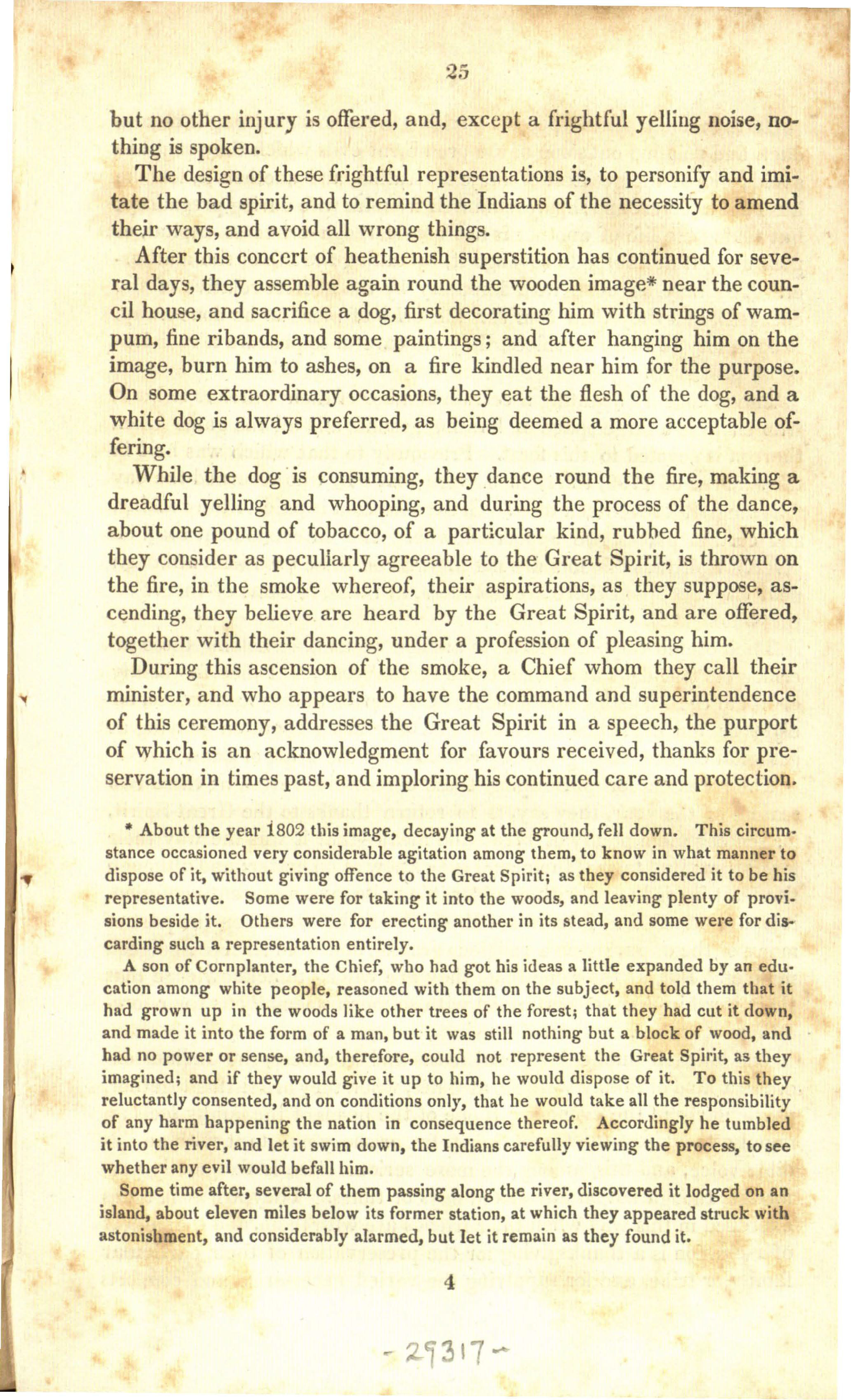but no other injury is offered, and,
except a frightful yelling noise, no-
thing is spoken.
The design of these frightful representations is, to personify and imi-
tate
the bad spirit, and to remind the Indians of the necessity to amend
their
ways, and avoid all wrong things.
After this concert of heathenish superstition has continued for seve-
ral
days, they assemble again round the wooden image* near the coun-
cil house,
and sacrifice a dog, first decorating him with strings of wam-
pum, fine
ribands, and some paintings; and after hanging him on the
image, burn him
to ashes, on a fire kindled near him for the purpose.
On some extraordinary
occasions, they eat the flesh of the dog, and a
white dog is always
preferred, as being deemed a more acceptable of-
fering.
While the dog is consuming, they dance round the fire, making a
dreadful
yelling and whooping, and during the process of the dance,
about one pound
of tobacco, of a particular kind, rubbed fine, which
they consider as
peculiarly agreeable to the Great Spirit, is thrown on
the fire, in the
smoke whereof, their aspirations, as they suppose, as-
cending, they
believe are heard by the Great Spirit, and are offered,
together with their
dancing, under a profession of pleasing him.
During this ascension of the smoke, a Chief whom they call their
minister,
and who appears to have the command and superintendence
of this ceremony,
addresses the Great Spirit in a speech, the purport
of which is an
acknowledgment for favours received, thanks for pre-
servation in times
past, and imploring his continued care and protection.
*About the year 1802 this image, decaying at the ground, fell down. This
circum-
stance occasioned very considerable agitation among them, to
know in what manner to
dispose of it, without giving offence to the
Great Spirit; as they considered it to be his
representative. Some were
for taking it into the woods, and leaving plenty of provi-
sions beside
it. Others were for erecting another in its stead, and some were for
dis-
carding such a representation entirely.
A son
cation among white people, reasoned with them on the subject, and told them that it
had grown up in the woods like other trees of the forest; that they had cut it down,
and made it into the form of a man, but it was still nothing but a block of wood, and
had no power or sense, and, therefore, could not represent the Great Spirit, as they
imagined; and if they would give it up to him, he would dispose of it. To this they
reluctantly consented, and on conditions only, that he would take all the responsibility
of any harm happening the nation in consequence thereof. Accordingly he tumbled
it into the river, and let it swim down, the Indians carefully viewing the process, to see
whether any evil would befall him.
Some time after, several of them passing along the river, discovered it
lodged on an
island, about eleven miles below its former station, at
which they appeared struck with
astonishment, and considerably alarmed,
but let it remain as they found it.

